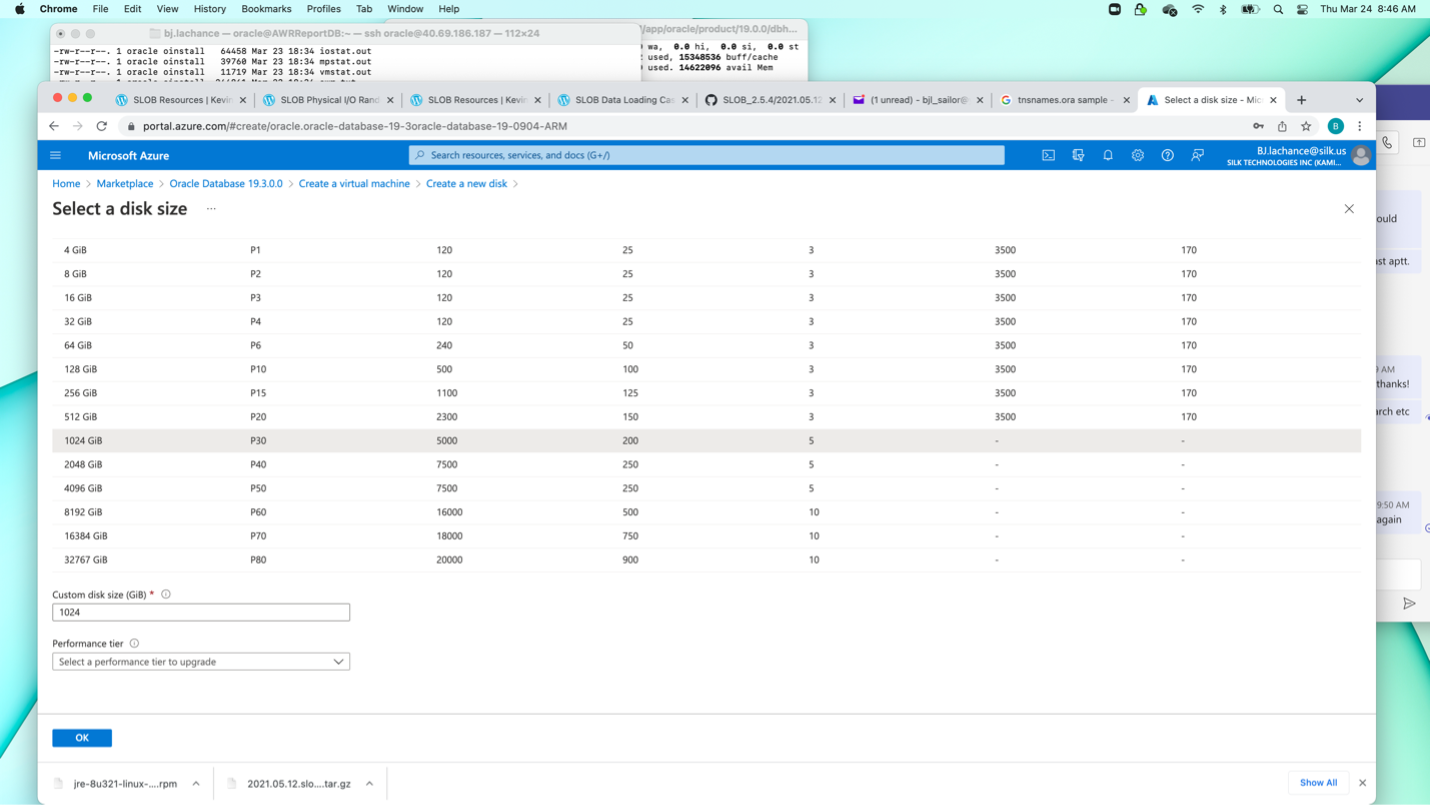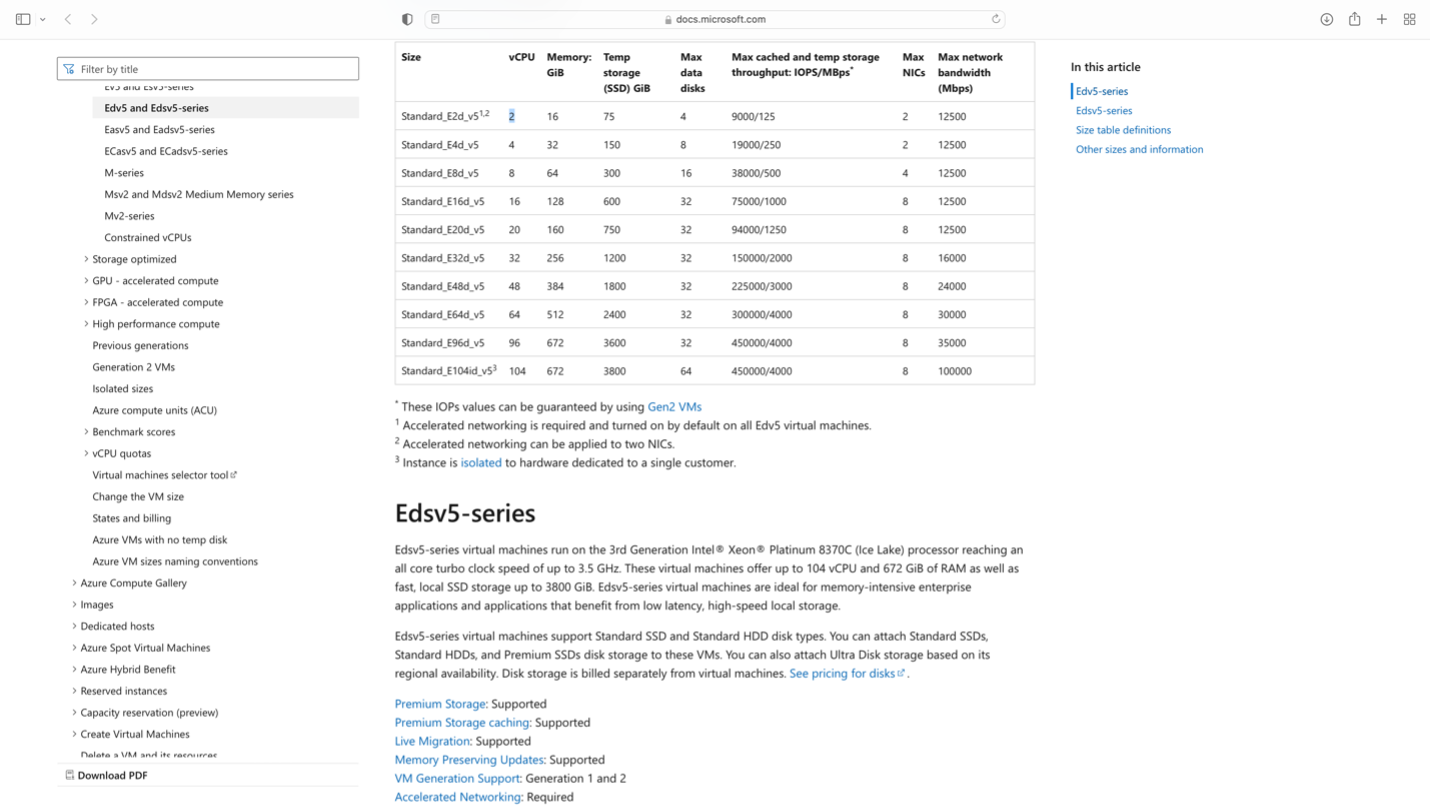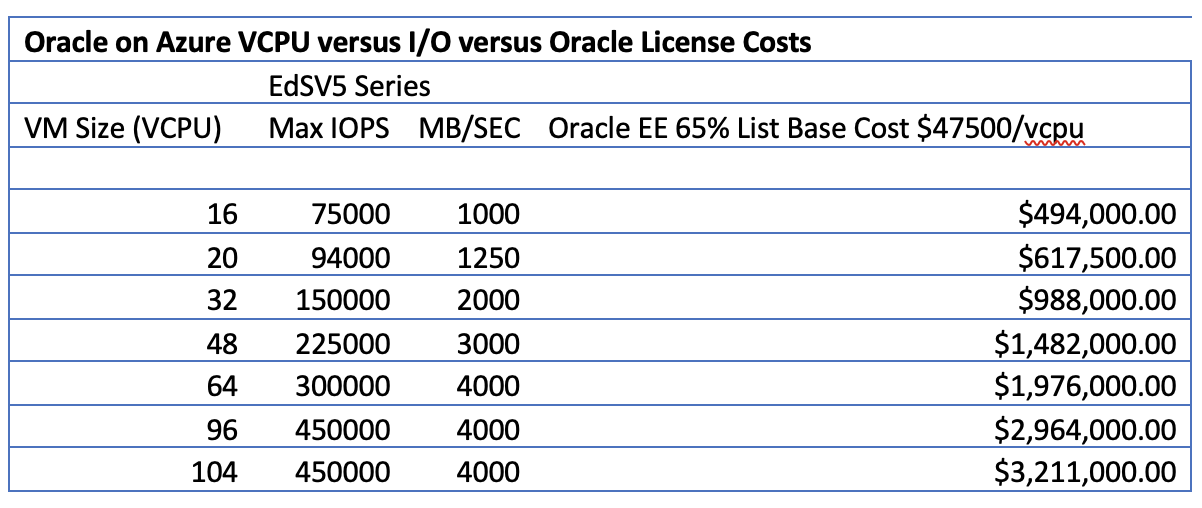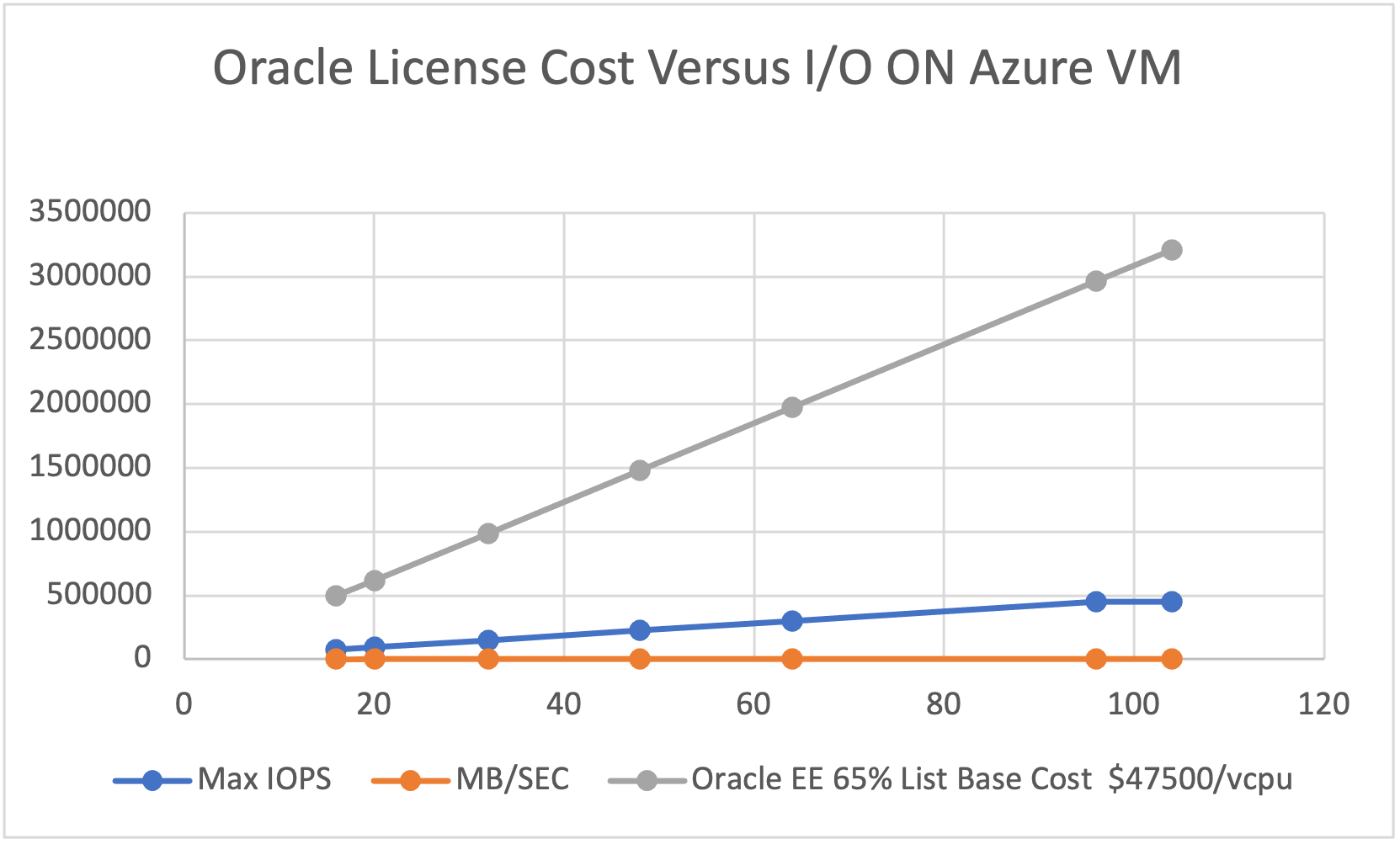Among its many incredible capabilities, one bonus of the Silk Cloud Platform is its ability to prevent cloud overprovisioning. This amazing capability really resonated for me recently. I was provisioning an Oracle server from the Azure Marketplace, and I ran across the below chart. Maybe this is old news for some, but to me it is immediately clear that you must max out resources to get max available I/O. And the delta between the middle and the top is huge. If I needed just 4TB to accommodate my small but very heavily utilized OLTP RDBMS – I’d get only 7500 IO/sec. I’d have to max out to 32 TB to get the maximum listed throughput of 20000 IO/sec.
In effect, a 4x increase in your cloud costs.

It actually becomes even more pronounced when you choose premium series vCPUs from the Edsv5 series. (This is a new high-performance chip you would select for high end OLTP/ERP workloads.) You would need to get to 96 vCPUs to get the full I/O bandwidth afforded by this series. Since databases traditionally bottleneck first on I/O, chances are there will be idle CPU if fully provisioned for I/O instead of CPU.
Here is what the IO/sec to CPU count ratio looks like on the new Azure vCPU high end:

Here is a quick plotting of I/O’s per second versus CPU count from the Edsv5 series.


The big factor here is not so much the cost of the IAAS CPU but rather the Oracle License costs associated with all this ‘spare CPU capacity’… As you can see, Oracle license costs go up linearly — and dearly — even at a conservative cost estimate of 65% of list. This doesn’t include options such as Management and Diagnostics Pack, Advanced Security, Partitioning or Advanced Compression. All of these licenses are also vCPU based and costs will increase accordingly.
Silk can mitigate this. The platform has the capability of removing the I/O bandwidth limitations of VMs by providing a highly transparent but extremely performant I/O service that easily exceeds even the high vCPU count cloud-based limits of throughput and I/O’s per second. By doing this, it is often possible to reduce the number of vCPUs you need to be burning to get the I/O your workload requires. This saves costs on all fronts, no disk over-provisioning, no vCPU overprovisioning and perhaps most importantly, less Oracle licensing overprovisioning. Finally, the costs of Oracle’s support services ( ~22% of license) is also based on vCPU count. So, even more savings could be realized if you can right-size your database’s vCPUs independently of your I/O requirements. Silk can help you do this as well as provide unparalleled I/O performance both in aggregate throughput and raw I/O’s per second.
If you’re curious how we do that, check out our architecture paper and see what our secret sauce is.




